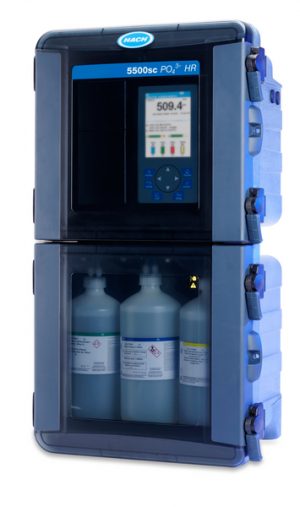SP510 Hardness Analyzer (10 mg/L trip point)
Maximize your softener cycle time and minimize your regeneration cost.
Analyzer immediately signals hardness breakthrough to activate regeneration. The SP510 Analyzer makes your water softening system more efficient and less costly. It’s reliable, simple and accurate- with automated calibration and continuous monitoring.
- Continuous Hardness Detection
- Simple to Read and Use
- Rugged, lightweight, and self-contained
- Making Water Softening Systems Cost-efficient
- Low Maintenance Requirements
Description
DETAIL
Continuous Hardness Detection
The Hach SP 510 Hardness Monitor continuously monitors water systems to provide an alarm when total hardness exceeds a pre-set limit (eight alarms are available). By performing an analysis every two minutes, the SP 510 monitor can establish an automatic or semi-automatic system for water softener regeneration in a variety of commercial or industrial applications.
Simple to Read and Use
The SP 510 monitor detects hardness breakthrough when the capacity of a water softener is exhausted, immediately signaling the need for regeneration. Alarm points are 0.3, 1, 2, 5, 10, 20, 50, and 100 ppm (expressed as mg/L of CaCO3) and are selected by using the appropriate model. LED indicators show a simple HARD or SOFT sample status. Use the monitor’s built-in alarm relay to actuate an external annunciator.
Rugged, lightweight, and self-contained
The case of the SP 510 monitor is made of ABS plastic which is lightweight, corrosion-resistant, and shatterproof. This sealed case is IP62-rated and has a hinged door that for easy access to internal components. All electronic circuits are isolated from the hydraulics compartment. A large window allows inspection of both LED indicators and reagent supplies at a glance. Wall-mounting is easy with built-in brackets. The instrument is rated for 115/220 Vac, 50/60 Hz operation, with a switch for voltage selection.
Making Water Softening Systems Cost-efficient
The traditional method of determining softener regeneration cycles is based on calculation of the water volume that can pass through a softener before its capacity is exhausted. Many variables (temperature, flow rate, and condition of the exchange resin) can affect the accuracy of these calculations. A substantial safety margin is also generally included, which can result in waste of time and brine used for regeneration. The Hach SP 510 monitor can eliminate this guesswork. The softener is regenerated only when needed, based on accurate chemical analysis rather than estimated volume.
Low Maintenance Requirements
The SP 510 monitor is designed for continuous, unattended use. It is virtually maintenance-free, requiring only about 15 minutes every two months to replenish and standardize the reagents. Tubing in the pump system should be replaced at six-month intervals. Spare pump tubing is supplied with the monitor.
What’s in the box?
SP510 Hardness Monitor, two month’s supply of reagents, an installation kit, a maintenance kit, Hach user manual.
Specifications
Accuracy: ±25% of set point value
Alarm: 2 consectutive cycles above set point activate alarm. 1 cycle below set point cancels alarm.
Alarm points: 10 mg/L of CaCO3 trip point
Certifications: NRTL certified to UL and CSA standards, and CE approved
Cycle Time: 2 average
Dimensions (H x W x D): 419 mm x 318 mm x 178 mm
Fitting Type: Inlet: ¼-in. OD tube quick-disconnect fitting
Outlet: ½-in. ID flexible hose
Maintenance Interval: Standardise and replenish reagents every 2 months using EDTA or high-level sample
Replace pump tubes every 6 months
Material Enclosures: ABS plastic, large plastic windows to view alarm and reagents level
Measurement Method: Colorimetric
Operating Humidity: 5 – 95%, non-condensing
Operating Temperature Range: 5 – 40 °C
Output: 1 SPDT relay
Power Requirements (Hz): 50/60 Hz
Power Requirements (Voltage): 115/230 V AC
Reagent Consumption: 500 mL each indicator and buffer every two months
Reagent Requirements:each of indicator and buffer. Replenish every two months for continuous operation.
Repeatability: ± 10 % of set point value in 0.3 – 2 mg/L ranges
± 4 % of set point value in 5 – 100 mg/L ranges
Sample Flow Rate: 50 – 500 mL/min
Sample Pressure: 0.07 – 0.34 bar (0.10 bar is optimum)
Sample conditioning: 0.10 – 5.17 bar
Storage Conditions: -40 – 60 °C
Weight: 11.3 kg




